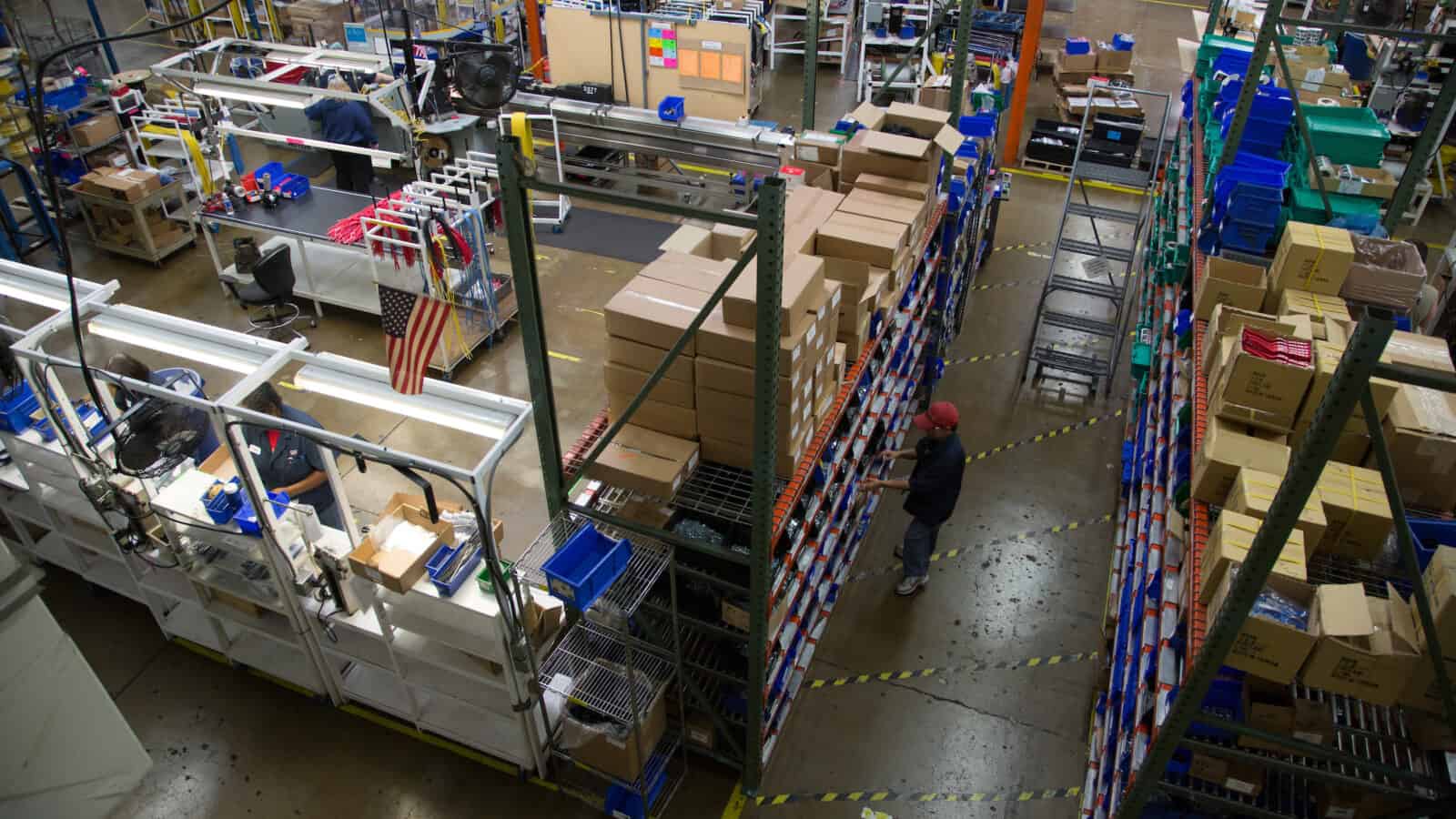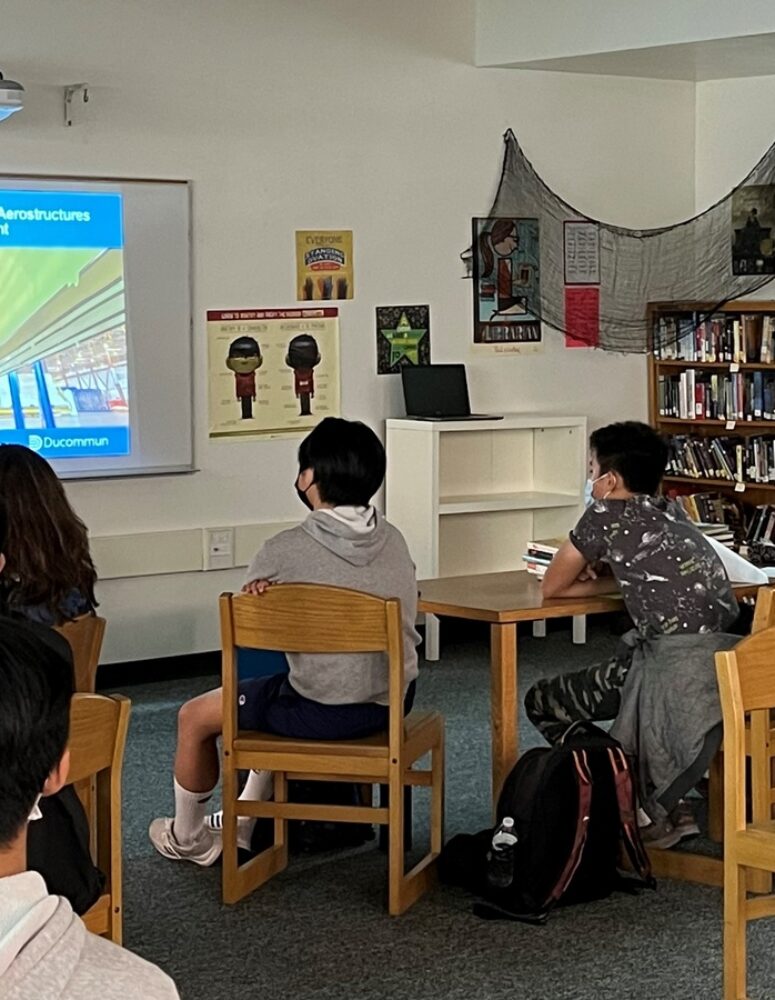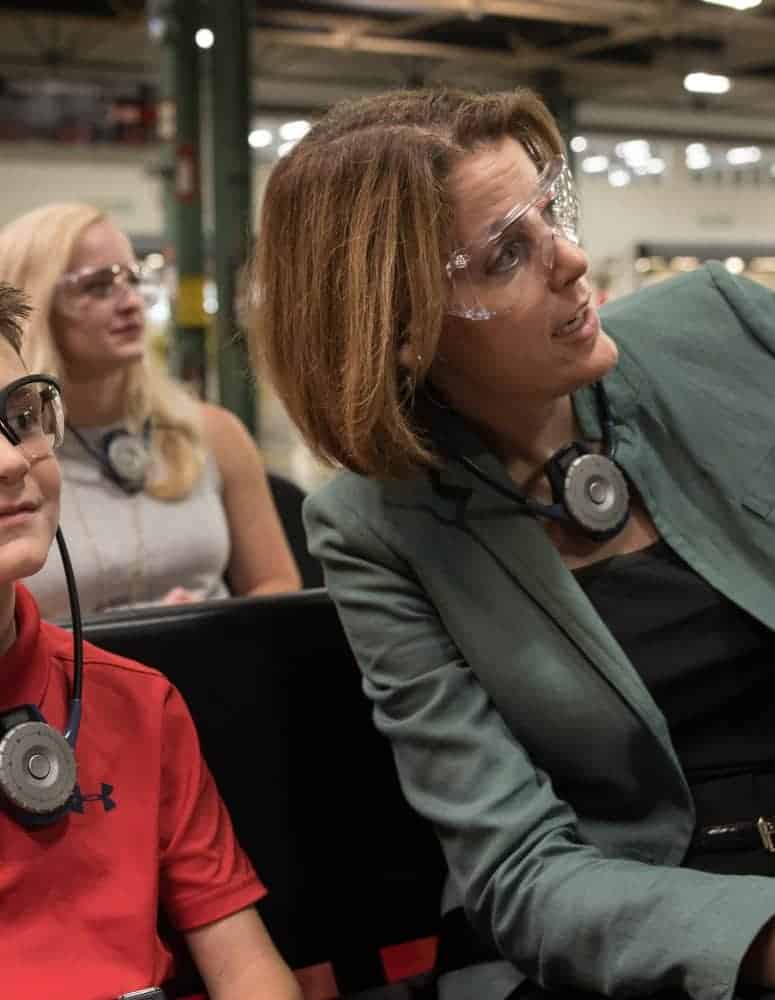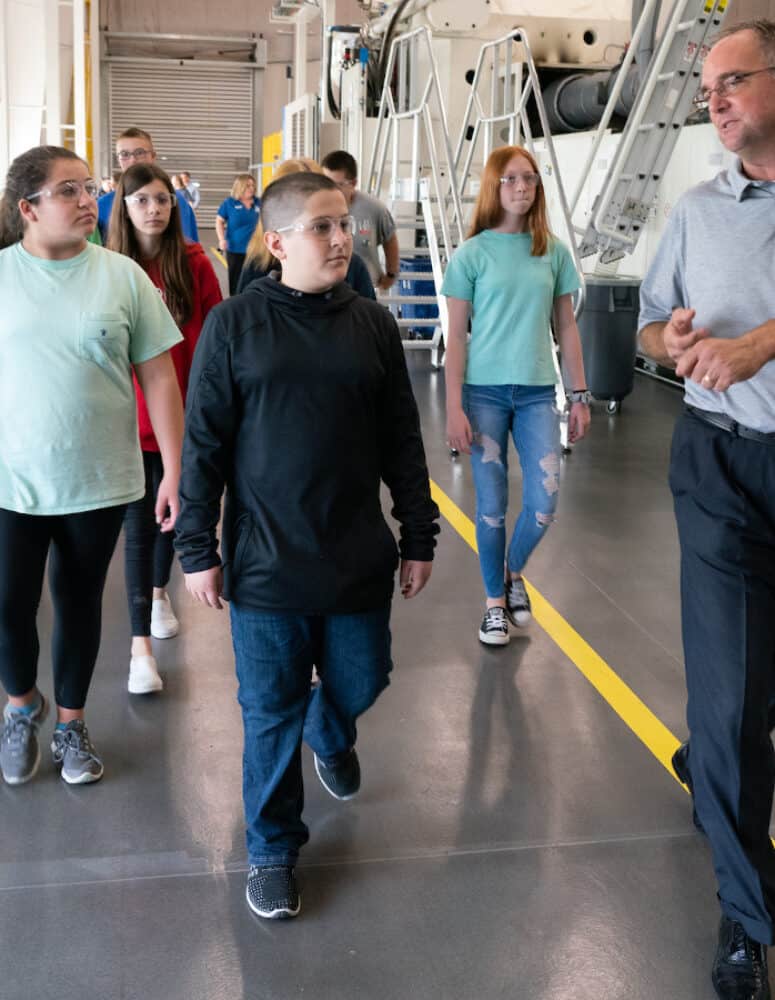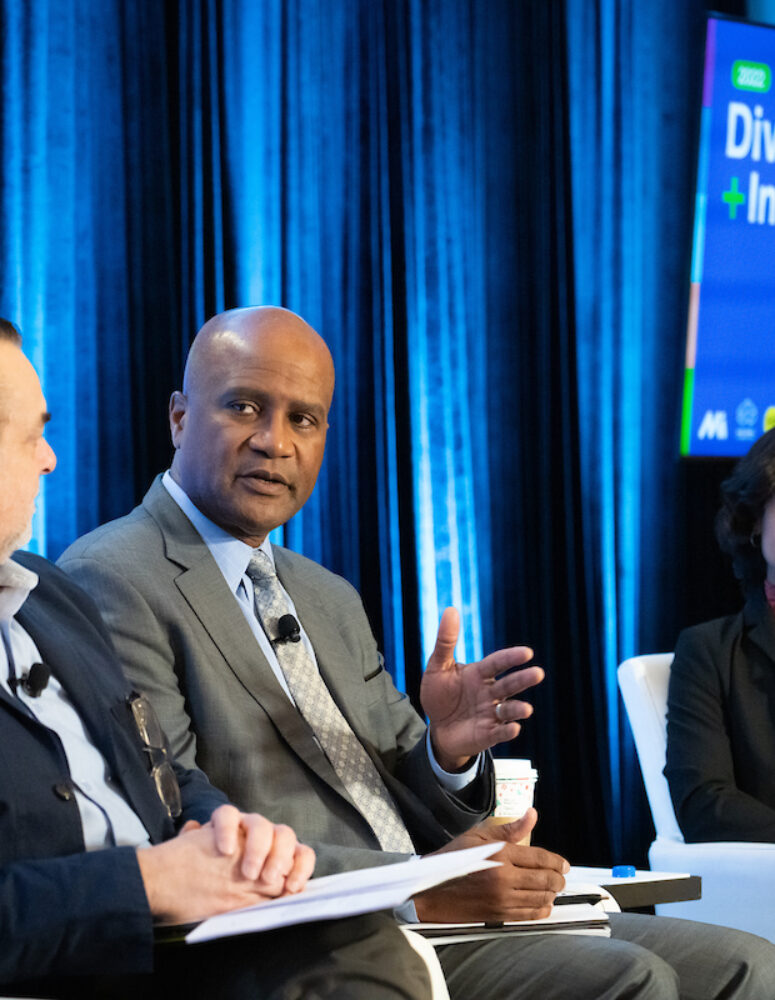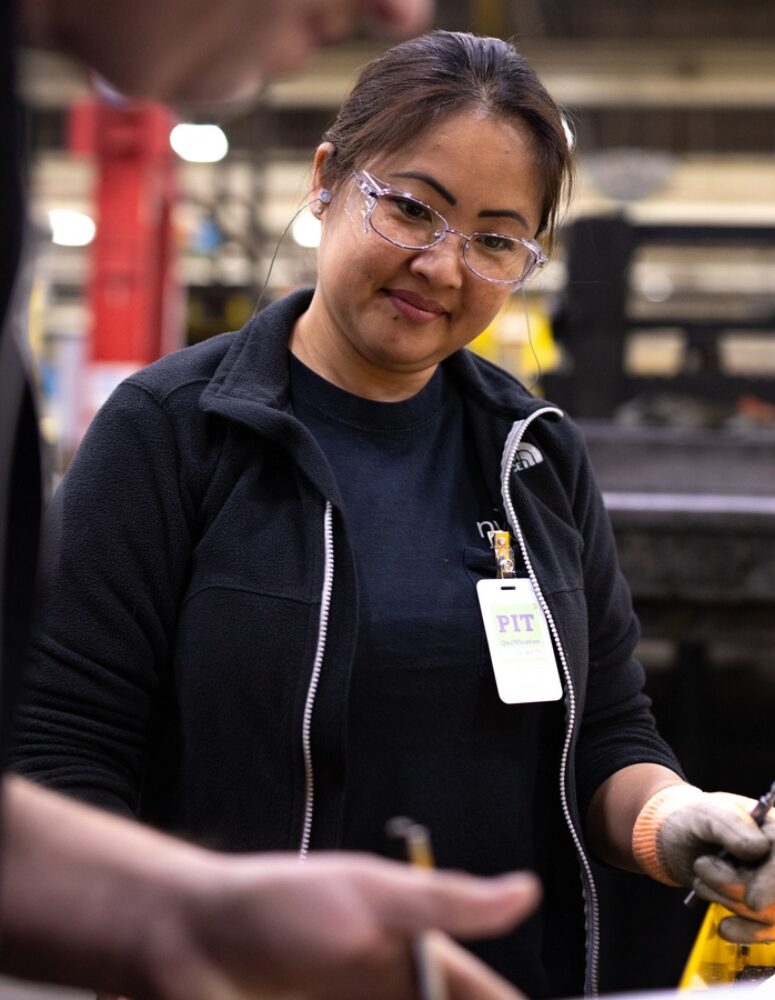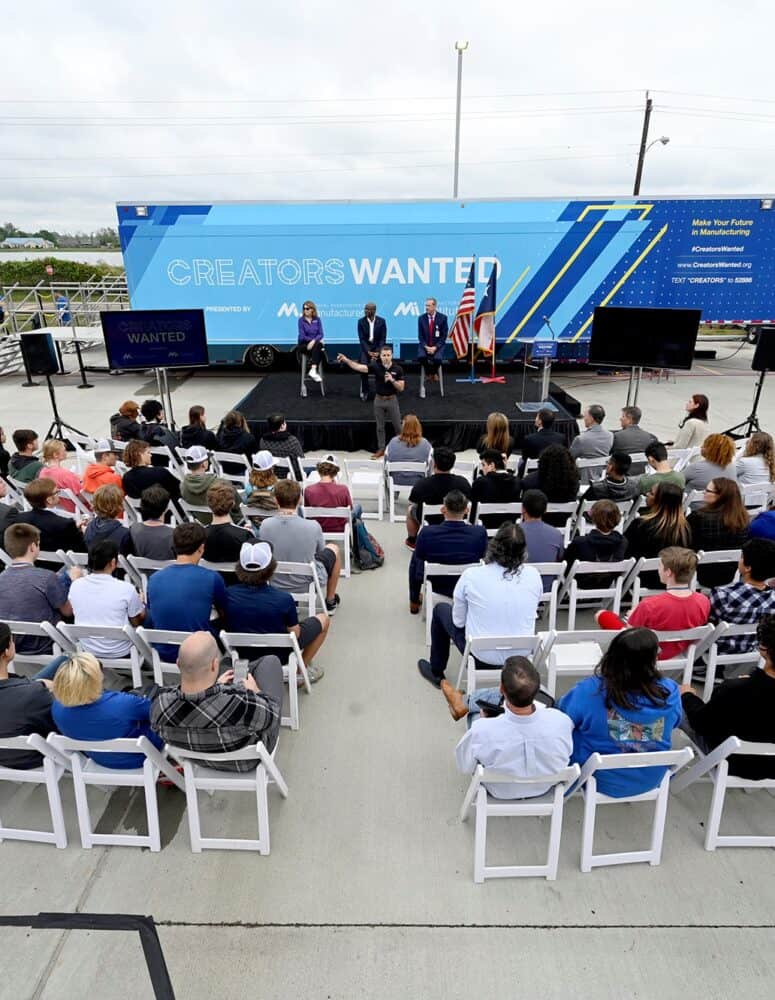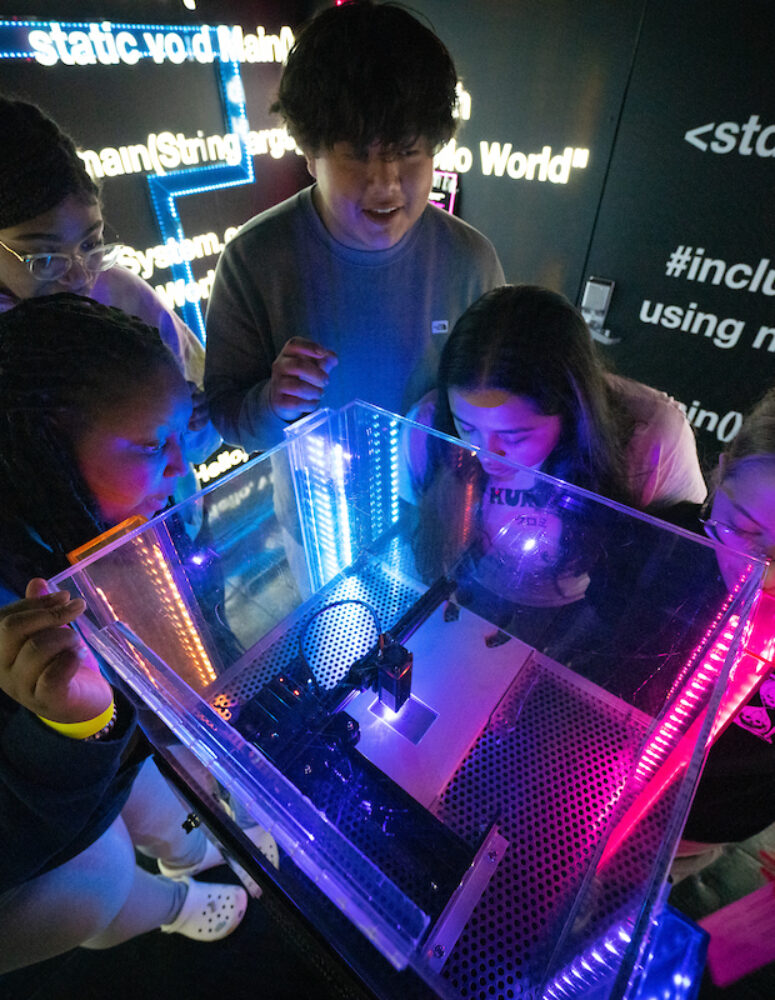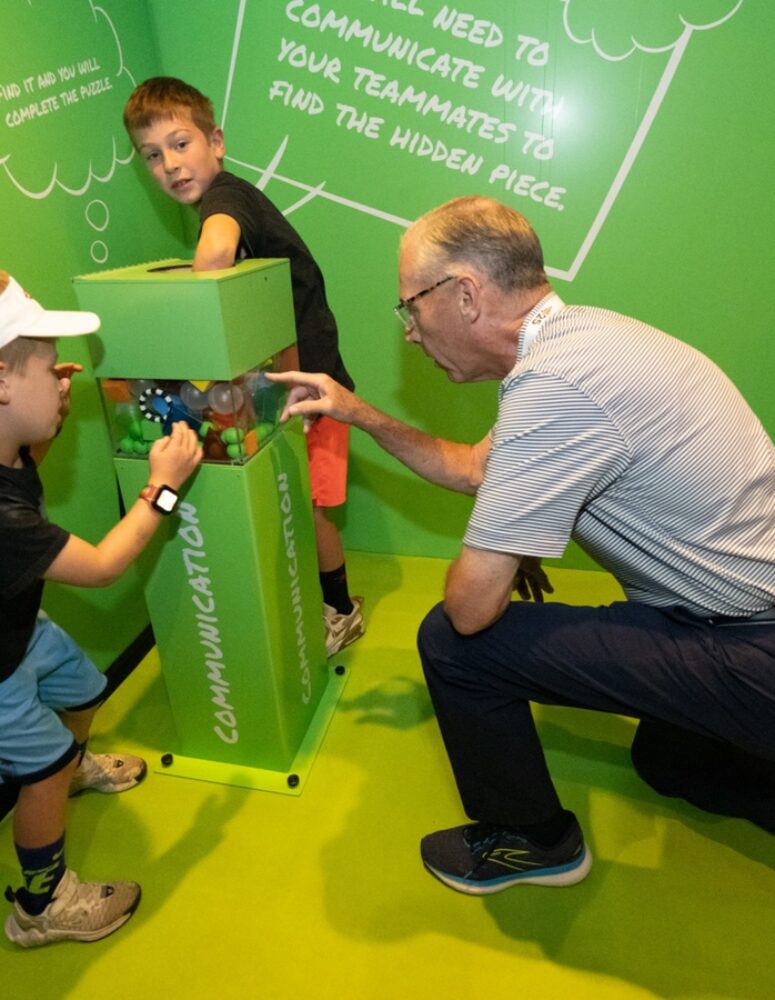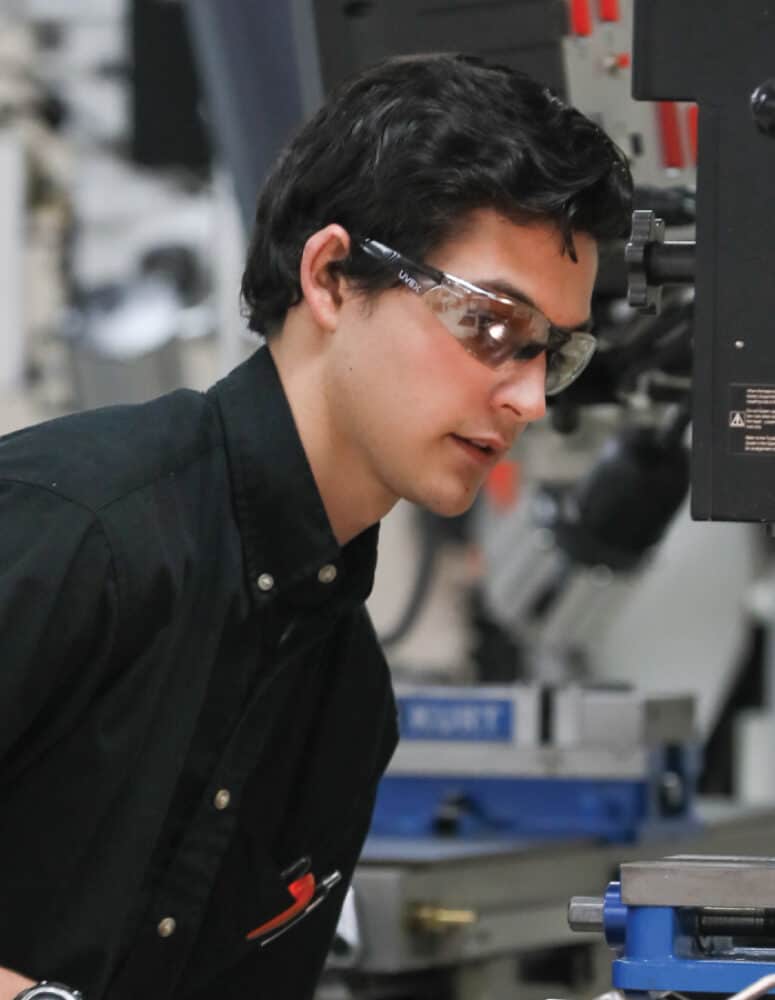Labor Market by the Numbers – July 2023
The big number: 74.4% of respondents in the Q2 NAM Manufacturers’ Outlook Survey cited the inability to attract and retain workers as their primary business concern, even amid signs of a cooling labor market. This is the third consecutive quarter in which this concern appeared at the top of respondents’ list.
- In the previous survey, more than 59% of manufacturers said that not having enough employees would impact their ability to make investments or expand.
Manufacturing: Manufacturing employment rose by 7,000 in June, continuing to seesaw from month to month over the year to date.
- The sector added just 15,000 workers during the first six months of 2023, slowing materially after adding a robust 385,000 and 390,000 employees in 2021 and 2022, respectively.
- More positively, there were 12,989,000 manufacturing employees in June, just shy of February’s total of 12,988,000, which was the most since November 2008.
Nonfarm payrolls: Nonfarm payroll employment rose by 209,000 in June, slowing from 306,000 in April but still a good figure. The U.S. economy has added 1,669,000 workers through the first half of 2023, a robust pace.
- The unemployment rate edged down from 3.7% in May to 3.6% in June, as the economy remains at or near “full employment.”
- The number of employed workers increased from 160,721,000 in May to 160,994,000 in June, which was not far from April’s record level (161,031,000). Those who were unemployed declined from 6,097,000 to 5,957,000.
- The labor force participation rate remained at 62.6% for the fourth straight month, the best rate since March 2020.
Job openings: There were 604,000 manufacturing job openings in May, down from 668,000 in April and the lowest level since February 2021. Even with the overall labor market remaining solid, the number of job postings in the sector continues to cool notably, as expected.
- Total quits in the manufacturing sector rose to 293,000 in May, an 11-month high. In addition, total quits in the overall economy increased to 4.015,000, the most since December.
- With that said, layoffs in the manufacturing sector have also risen, up to 139,000 in May, the highest level since July 2020.
- Meanwhile, nonfarm business job openings declined from 10,320,000 in April to 9,824,000 in May, a solid reading. In May, there were 62.1 unemployed workers for every 100 job openings in the U.S. economy.
Wages: The average hourly earnings of production and nonsupervisory workers in manufacturing jumped 1.0% to $26.41 in June, with 5.6% growth over the past 12 months, up from 4.7% in May.
➔ Key takeaway: Manufacturers continue to cite an inability to attract and retain workers as their top challenge. While there are signs that the labor market is cooling, both for manufacturers and the macroeconomy, employment remains not far from a 15-year high while wage growth continues to increase very solidly.
On the Job Market: Current Trends – July 2023
Which manufacturing sectors experienced the most growth in job openings over the past year? We used Lightcast™ to dive into the 789,969 unique job postings for the past 12 months (May 2022 to May 2023) and organized by North American Industrial Classification (NAICS) codes. In this case, we are better able to understand what sectors are experiencing the most growth. As a reminder, the data get more granular with increased digits.
The top manufacturing sectors over the past 12 months at the 3-digit NAICS level, ordered by the number of unique postings, were:
- Computer and Electronic Products (NAICS 334) – 103,507 unique postings
- Transportation Equipment (NAICS 336) – 93,075
- Food Manufacturing (NAICS 311) – 78,397
- Machinery (NAICS 333)– 74,193
- Chemicals (NAICS 325) – 72,254
The top manufacturing sectors over the past 12 months at the 4-digit NAICS level, ordered by the number of unique postings:
- Navigational, Measuring, Electromedical, and Control Instruments Manufacturing (NAICS 3345) – 66,411 unique postings
- Beverage Manufacturing (NAICS 3121) – 54,837
- Aerospace Products and Parts (NAICS 3364) – 40,541
- Pharmaceuticals and Medicines (NAICS 3254) – 27,442
- Motor Vehicle Manufacturing (NAICS 3361) – 25,006
➔ The takeaway: Though growth in manufacturing has been broad-based, many of the sectors leading job creation over the past year require advanced skills and yield high salaries. Looking at only the top five 4-digit NAICS manufacturing sectors list above, the median advertised salaries for those five sectors over the past 12 months was $36.12 per hour.
* Lightcast™ data accessed on June 16, 2023.
What We’re Reading – July 2023
Speaking of the importance of flexibility, a Harvard Business Review survey of 5,700 onsite US workers in industries like manufacturing, transportation and health care found a mismatch between the flexibility options that companies provide and what employees actually want.
What companies are offering: The most common flexibility options that onsite workers reported were relaxed dress code (55%), flexible start and end times (33%) and choice over hours they worked (31%).
What onsite workers want: When asked what flexibility options they would change jobs to get, onsite workers reported increased paid time off or vacation time (57%) and four-day work weeks (44%).
Employee engagement matters: People with engaging work and one week of vacation report 25% higher well-being than actively disengaged workers who have six or more weeks of vacation, according to Gallup research.
- Among those with fully onsite work responsibilities, Gallup finds that those with a four-day work week report lower active disengagement and higher overall well-being.
Solutions Center: Flexibility Working Group – July 2023
Lack of flexibility is a top workforce challenge for employees, according to a recent report released by the MI. To address this concern and help employees attract and retain more workers, the MI has been convening manufacturing leaders to discuss flexibility solutions, identify what’s working and share insights. Here are some of the key takeaways.
The shop floor challenge: Flexible work arrangements for shop floor workers are different from those offered to office staff or remote workers, as manufacturers must fulfill in-person production requirements and timelines.
- Companies have gotten creative, testing out different options including compressed work weeks, rotating schedules, flex scheduling, shift swapping and phased retirements.
A data-driven approach: Participants in the MI’s working group conducted surveys to gauge the types of flexibility their employees wanted. Companies then assessed production needs before determining what flexibility options they would test, sometimes with the help of a consultant.
- One company collected data on recruitment and retention as part of their pilot to help evaluate its effectiveness.
- Other companies utilized employee engagement surveys to assess the success of their pilots.
Support system: Companies in the working group talked about the importance of creating support structures for flexibility plans.
- For example, one company hired a training and scheduling coordinator to manage their new systems. Others employed technology platforms to organize shifts.
- Supervisors also needed to be trained to handle new systems and manage flexibility requests while meeting production demands, the participants noted.
Stay tuned: The MI is planning to release a white paper based on the working group discussions in the fall.
Make the Most of MFG Day 2023
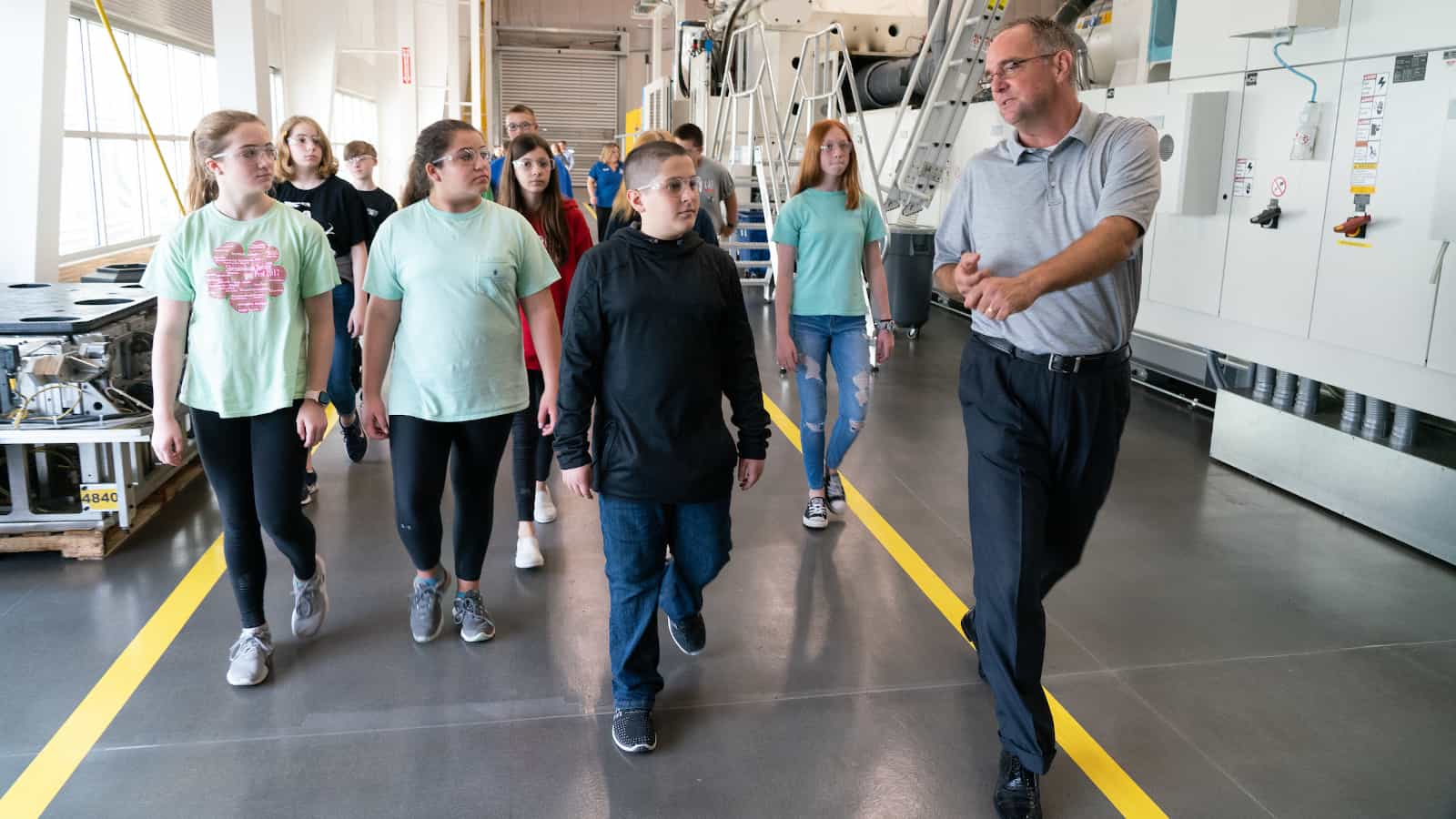
This year’s biggest celebration of manufacturing is coming up soon in October—and manufacturers who want to take part should start planning now.
On MFG Day—Friday, Oct. 6—and throughout the rest of the month, manufacturing companies, community colleges and associations will have their best opportunity to show young people all the industry has to offer them, via factory visits, career fairs and more. So how can companies make the most of it?
Recently, the Manufacturing Institute—the NAM’s 501(c)3 nonprofit workforce development and education affiliate—hosted a webinar to share tips, insights and resources for companies interested in putting on their own MFG Day events.
The participants: The webinar, titled “Making the Most of Your Event,” was hosted by MI Director of Student Engagement Jen White. It included presentations and insights from GenMet Corporation CEO Eric Isbister and American Honda Motor Co. Assistant Manager of Government and Industry Relations Meredith Reffey.
Find your event: Manufacturers can engage in a range of different kinds of events—from career fairs to school visits to challenges and competitions.
- The most common MFG Day event is a facility tour or open house, which allows students, educators and parents to see firsthand the work that manufacturers do every day.
- But whether a manufacturer opens their doors for a tour or designs a “Parents’ Night” for family members, the most important thing is to find an authentic way to connect with community members, the panelists recommended.
- “If you are reaching students and educators, parents, even community members, then you’re … growing awareness of manufacturing and hopefully exciting folks about potentially working in the industry,” said White.
Show yourself: According to Isbister, the first priority of an MFG Day event should simply be to present careers in manufacturing as a viable option for community members.
- “We’ve had over 3,000 students tour here, and our goal … is to let them know that manufacturing exists,” said Isbister. “Most of them don’t, most parents don’t. Most teachers and guidance counselors and school board members don’t have the faintest idea of what we do. And when they walk in the building, their jaws hit the ground, and they’re excited to see things.”
Expand the circle: While engaging students is important, companies should be sure to invite others in the community as well, Isbister said.
- “Don’t just invite students [to your event], but teachers and guidance counselors and administrative people and school board members,” said Isbister. “If you get a student, you got one. If you get a teacher, you got 24. If you get a school board member, you’ve got the person with the pen who can authorize things—and that’s important, too.”
Know your audience: According to Reffey, it’s critical to meet audiences where they are.
- One of the most important lessons Honda has learned from past events is that high school audiences respond well to hands-on activities—particularly those that have an element of competition. By offering activities that the audience enjoys, manufacturers can amp up excitement and promote more engagement.
- “High school students can act very ‘too cool’—but if you set things up as a competition, they break out of their shells,” said Reffey. “Put a racing simulator in front of ’em, they seem to come unglued. They get so excited to participate.”
Get involved: The MI has a range of resources designed to help manufacturers create effective events—and White emphasized that those resources are open and available to all manufacturers interested in using them.
- “Being involved with MFG Day, hosting events, using the branding that’s available on the website, registering your events on MFGday.com and all of our resources and toolkits are 100% free to you,” said White. “You do not have to be an MFG Day sponsor. You do not have to be an NAM member. It is 100% free for you to use. We want as many companies and partners of manufacturers involved in MFG Day as possible.”
Learn more: Manufacturers are encouraged to reach out with any questions to [email protected].
Future Creators: Transportation Central Advances Industry Awareness
As part of Careers on Track, the MI and Union Pacific Railroad partnered with Everfi® to create and launch the Transportation Central module on Future Creators (Endeavor) – a digital education program giving middle and high-school students an opportunity to explore STEM careers. Using interactive gameplay, students explore a variety of professions, encounter real-world scenarios and learn new ways to solve common problems while interfacing with diverse employees along the way.
Transportation Central is an immersive simulation focused on careers in transportation, distribution and logistics (TDL). Other modules explore concepts in advanced manufacturing, data driven decision making and more. Read about how the MI and Union Pacific Railroad are leading the way to raise awareness and inspire students to pursue careers in manufacturing and TDL in the Transportation Central Case Study.
Unlimited access to Future Creators (Endeavor) is provided at no cost to select schools thanks to Union Pacific’s support. Contact Jen White, the MI’s Director of Student Engagement, to learn how you can help the MI provide Future Creators (Endeavor) to more students in schools across the U.S.
New MI Report: Manufacturers Make Strides in Addressing DE&I Priorities
Since the MI’s inaugural DEI benchmarking survey, conducted in partnership with Keybridge and released in October 2021, manufacturers have taken active steps to improve DEI in the workplace. The MI has recently surveyed manufacturers again to highlight current practices and attitudes around DEI in our new DEI Benchmarking in Manufacturing Report. Our updated survey lays out how manufacturing employers are approaching their companies’ initiatives in new ways. The report provides helpful information on the state of DEI in the manufacturing industry and recommendations for employers to use as they improve on progress made over the last two years. Check it out here.
KEY TAKEAWAYS:
- 72% of manufacturers agreed that improving and maintaining DEI was a key focus for their company – and many of them have been taking tangible steps towards that goal.
- More than 60% of respondents reported that the representation of women within their companies has increased in the past 5 years.
Manufacturers Make Progress on DE&I

Diversity, equity and inclusion efforts have a lot of payoffs: they widen talent pipelines, increase retention rates and improve business outcomes. So what are manufacturers doing to strengthen DE&I in their workplaces? A newly updated survey from the MI and Keybridge has the answers.
What it is: The MI and Keybridge conducted their inaugural DE&I benchmarking survey in October 2021, and manufacturers’ DE&I efforts have grown a lot since then. One year later, the MI and Keybridge repeated the survey, and the results are in—along with recommendations for manufacturers seeking to grow further.
A firm commitment: 72% of manufacturers agreed that improving and maintaining DE&I was a key focus for their company in 2022—and many of them have been taking tangible steps toward that goal.
- Of the 60% of companies that made public statements affirming their commitment to DE&I, most have followed through with diversity commitments, employee resource groups, donations and transparent updates on their DE&I progress.
Widening talent pools: More than 60% of respondents reported that the representation of women within their companies has increased in the past five years. Still, there were also some challenges in expanding the diversity of hiring pools.
- 50% of companies reported struggling with hiring diverse candidates, with 40% struggling with retaining diverse workers.
Where to start: Companies that have not yet taken concrete actions toward fulfilling their commitments can get started by developing a strategic plan or designating a senior leadership position for DE&I issues, the report recommended.
- Another useful tactic is setting up feedback mechanisms for employees, so the company can track its progress on DE&I.
More recommendations: For those further along, the report suggests other moves, including:
- Expand recruitment pipelines by partnering with community organizations, community colleges and technical schools to tap into more diverse pipelines.
- Update position descriptions with language that widens and diversifies the applicant pool.
- Review hiring practices to minimize bias, such as by including blinded resume reviews, standardizing interview questions and employing skills tests and panel interviews.
- Standardize the promotion processes by using the same scoring system and criteria for all employees, seeking input from multiple sources and highlighting clear career pathways.
- Standardize work assignment systems by cross-training workers, to ensure that no one employee is stuck in an undesirable role for too long.
The last word: “The labor market is historically tight, and we know the number one issue for manufacturers is workforce,” said NAM Chief Economist and Manufacturing Institute Center for Manufacturing Research Director Chad Moutray. “Focusing on DE&I is a great way to widen the net and retain the employees that you have.”
Creators Wanted Makes an Impact at SkillsUSA
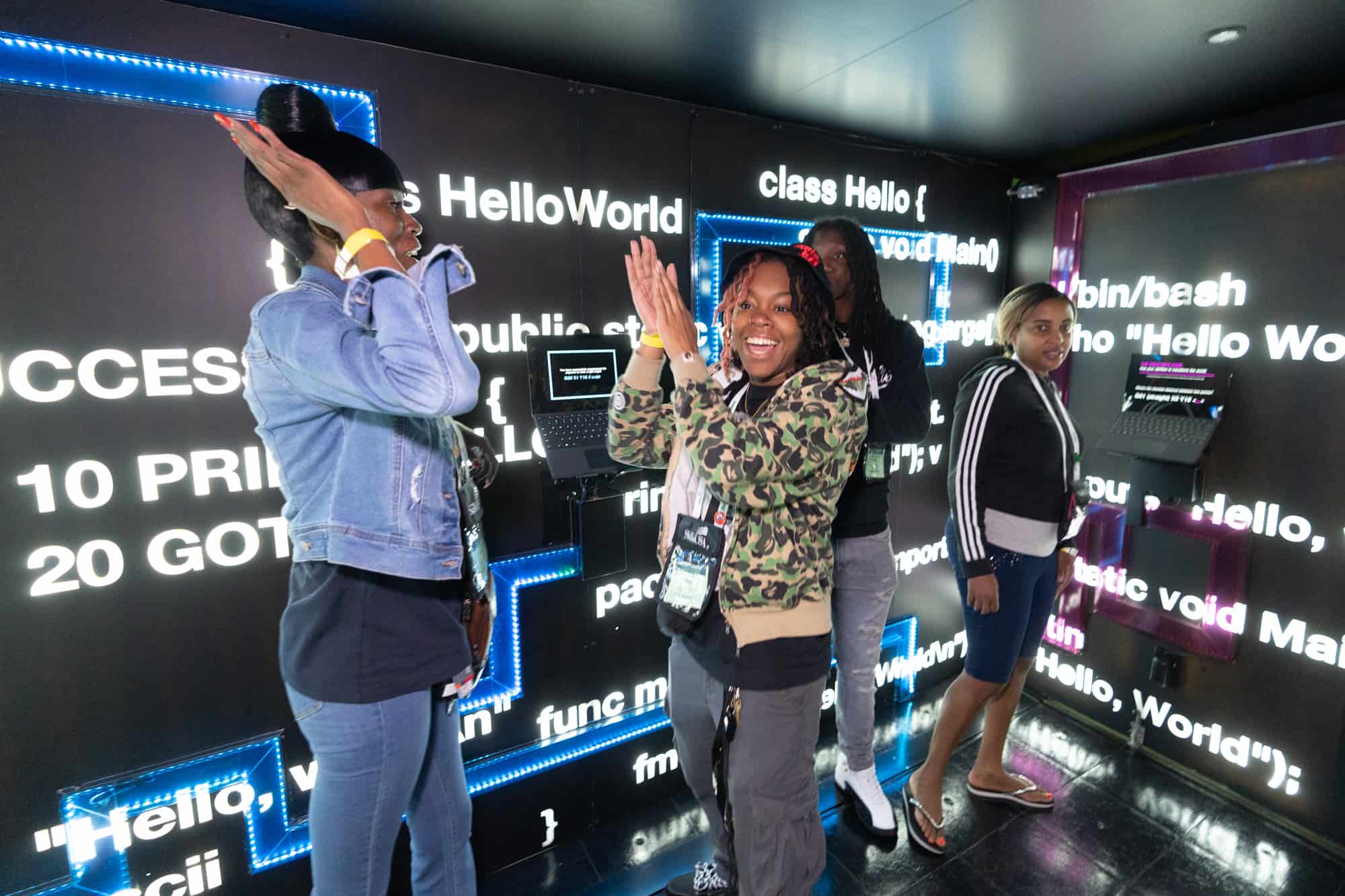
The Creators Wanted tour landed in Atlanta last week for the SkillsUSA National Leadership and Skills Conference—the largest gathering of the America’s future skills workforce.
Over the course of the three-day program, the tour, an initiative of the NAM and the Manufacturing Institute, helped change attitudes and challenge misconceptions about manufacturing, opening up a new world for some of the country’s most talented rising workers.
By the numbers: The tour’s SkillsUSA stop, sponsored by Honda, Snap-on, FactoryFix and Union Pacific, helped share the story of modern manufacturing with many of the brightest career mentors and technical education students in the United States.
- 15,000 people attended the event, including many career and technical education students, educators and parents.
- More than 1,500 people took part in the Creators Wanted immersive experience at SkillsUSA.
- More than 120,000 students and career mentors signed up to learn more about modern manufacturing careers during the tour stop in Georgia.
More participants: Other leading manufacturers were also in attendance, engaging students with information about careers in manufacturing. A few of the participants included Caterpillar, John Deere/Korematsu, Volvo NA Group, Vermeer Corp., Toyota, Cummins, Penske and 3M.
A special guest: Snap-on Chairman and CEO Nick Pinchuk dedicated a full day to inspiring students and educators. The NAM executive committee member and Manufacturing Institute board member emphasized the “Creators Wanted” mantra in order to remind participants that manufacturers aren’t just recruiting workers—they’re inspiring and empowering creators.
Local coverage: The visit made waves in Georgia, where it was covered on Fox 5’s Good Day Atlanta:
- “A huge turnout down here,” said Fox 5’s Paul Milliken, who had multiple live hits at the Creators Wanted immersive experience. “These students are so talented, so incredible … the future of America’s skilled workforce.”
- “This conference—it’s just a really incredible opportunity for these future workforce leaders to come together, meet each other, network and compete.”
WATCH: @GoodDayAtlanta's @PaulFromFox5 reports on #CreatorsWanted traveling to @GWCC_ATL for @SkillsUSA #NLSC23. Check out how we are working to inspire students to consider rewarding careers in modern manufacturing. https://t.co/0GAlhxDmTb pic.twitter.com/BFJeKyXS9G
— The NAM (@ShopFloorNAM) June 20, 2023
Overheard at the event: Plenty of participants shared their excitement, emphasizing opportunities to connect with employers, learn about new skills and find paths to future careers.
- “These are viable careers. They are jobs that you can make quite a bit of money right from the beginning, and at the same time you’re learning core skills that you can carry on for the rest of your life.”
- “We’ve got tons of jobs out there across the U.S. Everybody is looking for talented individuals.”
- “You can explore … different careers that you want to do, [to] help you become a more successful adult in the future.”
The big picture: Over the course of the Creators Wanted Tour, which launched a year and eight months ago:
- 4 million students and career mentors have signed up online to learn more about modern manufacturing careers.
- Over 10,000 students and more than 3,000 career mentors have participated in our immersive experience, with 84% reporting a significantly improved view of modern manufacturing careers.
- The tour has received $5.35 million in positive earned media and 150 million digital impressions.
Making an impact: “Interacting with the students, educators and caregivers, we could truly feel the impact we’re making,” said Chrys Kefalas, managing vice president of brand strategy at the NAM. “This isn’t just about changing minds—we’re creating dreams and altering life trajectories.”
What’s next: The tour keeps on rolling this fall to Minneapolis and St. Paul, Minnesota, and Circleville, Ohio. You can also keep an eye out for new online resources that are coming out this summer, or browse the more than 330,000 open manufacturing jobs and 150,000 training programs listed online.
“Listen and Act”: Bishop-Wisecarver Shares Retention Secrets
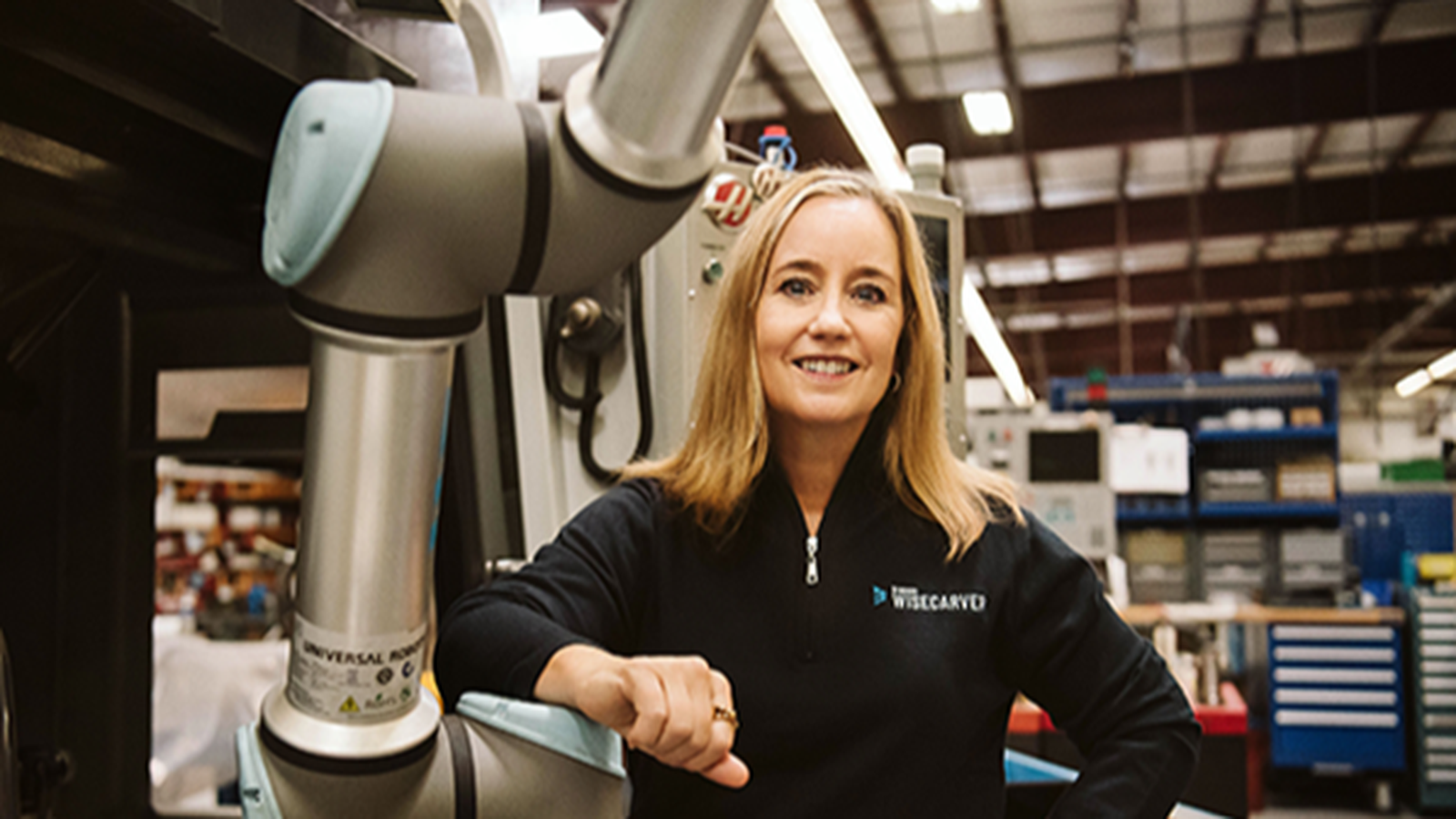
Keeping her employees happy and engaged is something Pamela Kan, president and owner of Bishop-Wisecarver, takes seriously.
And for good reason. Workforce retention is a pain point for many manufacturers and consistently cited, along with recruitment, as a top business challenge in the NAM’s Manufacturers’ Outlook Survey.
For Kan, meeting this challenge starts with getting her employees’ input—what’s on their minds, their career aspirations and the ways they think the company can improve. Then she acts on it.
Garnering feedback: To assess engagement, Bishop-Wisecarver surveys its employees and calculates an employee net promotor score, which is an internal measurement of employee satisfaction. Kan, the executive director of culture and people and department heads then discuss the areas that need improvement.
- “We share with employees where we have friction points or where things need to change,” Kan said. “We make that very visible. We then start checking these things off the list.”
The company also offers employees many different opportunities to share what’s on their minds, through informal check-ins, team huddles, employee lunches and skip-level meetings.
- “Every single one of these times we are asking for feedback,” Kan emphasized. “We document it and follow up on it, because whenever you ask for feedback and you don’t then respond with changes or next-level discussions, you break the trust with your employees that you care about them.”
- “I reach out to new employees at the 60-day mark to see how it’s going,” she continued. “One actually reached out and said, ‘yeah, we need to talk.’ It was all positive. Some things he didn’t quite understand, being new [to the company], and it showed me some gaps in our onboarding process.”
Conducting reviews: Instead of formal reviews, Kan says Bishop-Wisecarver has instituted quarterly check-ins, with the conversations often centering around career advancement.
- “We’ve tried to create a career ladder that’s not just vertical, but allows for offramps where employees can explore different channels of the company,” said Kan.
- “If somebody starts as an application engineer, that doesn’t mean they have to stay in engineering. They might want to go and try a position in sales, project management or marketing. We leave the door open.”
Other strategies: Kan has also implemented several other workplace practices to keep employees engaged.
- Recognizing employees: Through a program called “Bishop-Wisecarver Bucks,” employees receive a bank of bucks once a month that they can use to recognize others who have lived up to one of the company’s core values: preserve the family culture, deliver a signature experience, embrace a pioneering spirit and the need for speed. The company has an online portal where those receiving the bucks can purchase company merchandise, gift cards or tickets to events.
- Inspiring the next generation: Based on feedback from her employees, Bishop-Wisecarver partners with multiple nonprofits that support students in their local community. One of these is FIRST Robotics, which inspires young people to be science and technology leaders and innovators, as well as well-rounded contributors to society, by engaging them in mentor-based research and robotics programs.
- Reimagining the workspace: After polling her employees, Kan redesigned an entire building to reflect the workstyles and needs of her team. For example, the second floor of the building is now a large training space, where tables, chairs and white boards have wheels for easy configuration for company-wide meetings to multiple small groups. To break down the silos of separate lunchrooms, she created Wisecarver Way Café, complete with a pool table and ping-pong table. The company also has a space for employees to do yoga, allows them to bring their dogs to work and offers gym memberships.
- Offering support: Bishop-Wisecarver also has a program called Life Guides, which connects employees undergoing hardships with peer mentors who have been through similar difficulties, such as caring for an elderly parent or coping with a death in the family.
The last word: “Don’t ask your team for feedback and then do nothing with it,” Kan reinforced. “That’s what creates disengaged team members. Sometimes we don’t get it right, but at least we’ve tried.”
The Manufacturing Institute has many initiatives to help employers retain and develop their teams. For a deeper dive, check out this study by the MI on improving retention and employee engagement. The MI will also explore retention challenges and solutions at its Workforce Summit in Atlanta on Oct. 16–18. Click here for more information.
